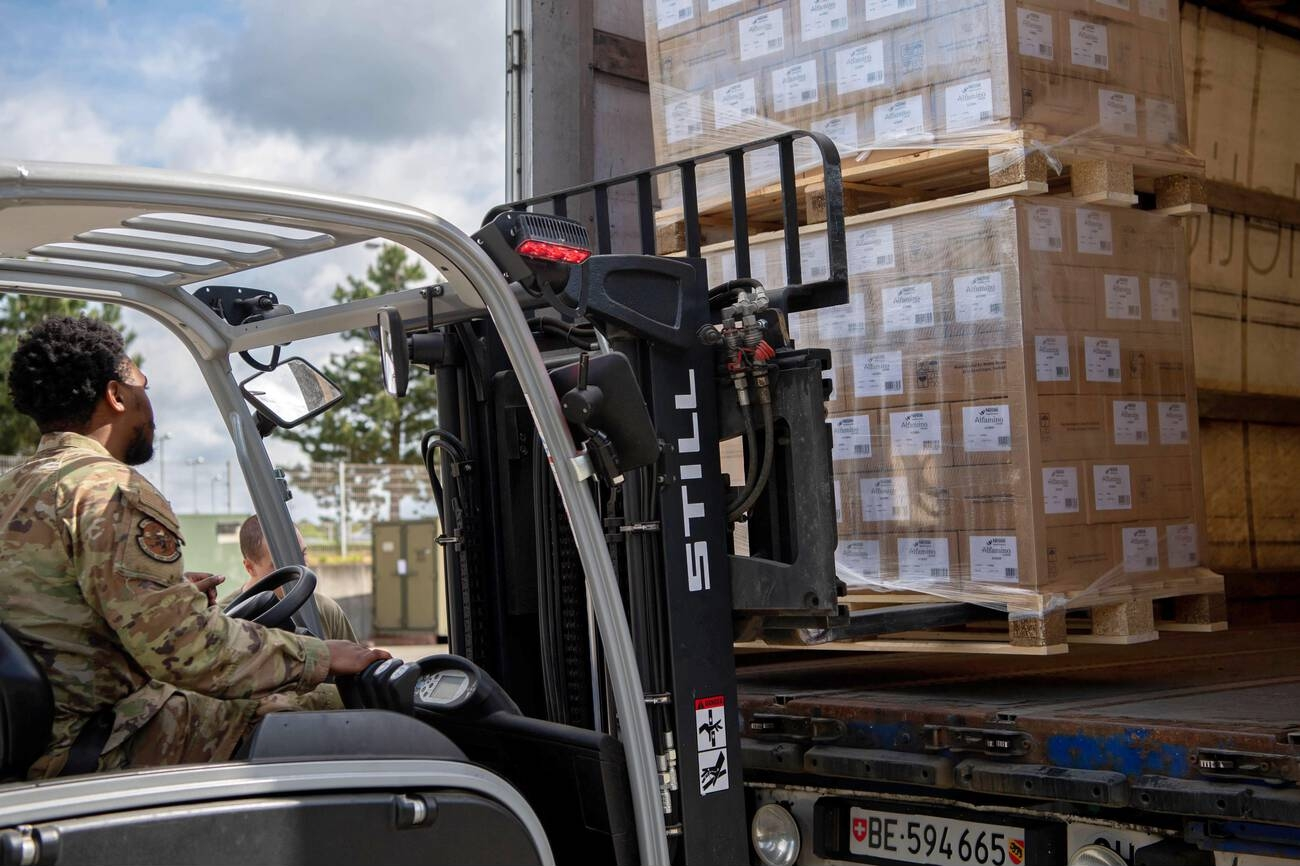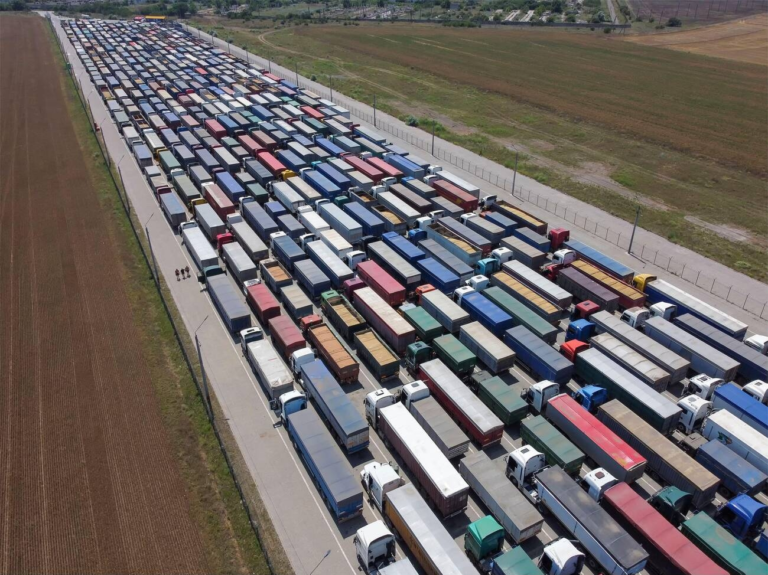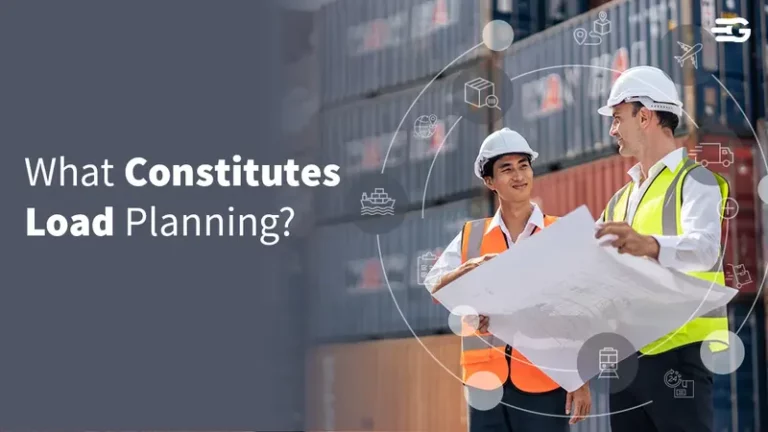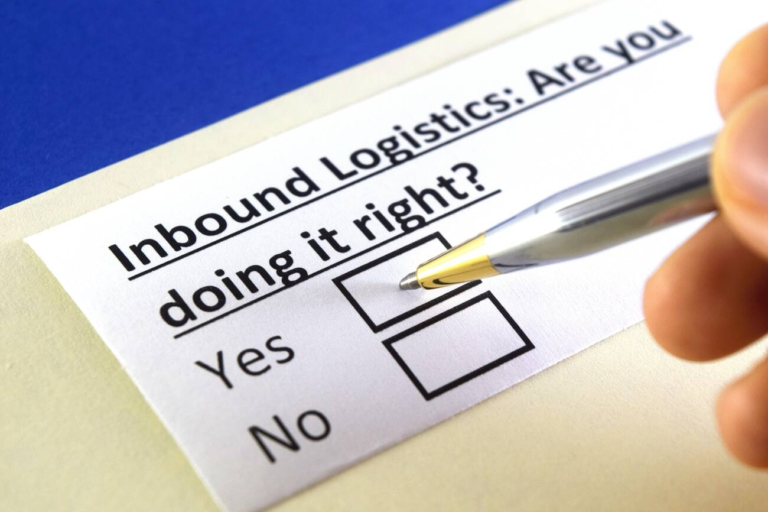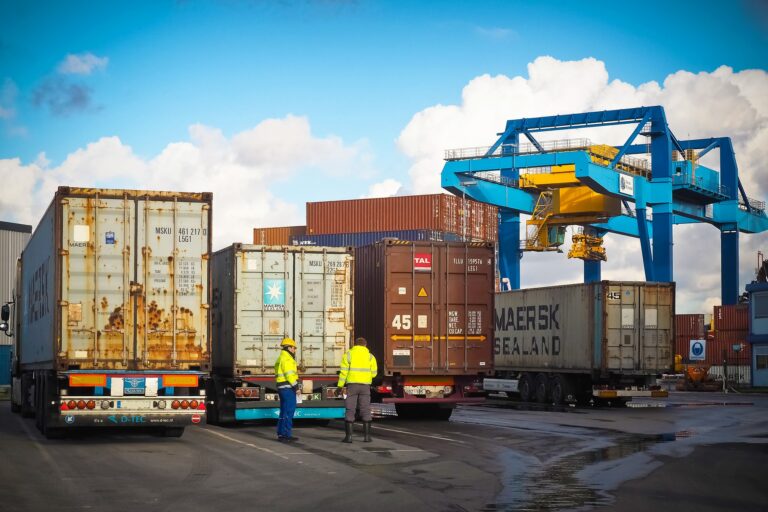Streamlining Logistics: A Guide to Consolidated Freight Shipping
Increasing productivity and lowering costs is now possible for companies of all sizes with the help of consolidated goods shipment. But what is consolidated goods shipment, and how can your supply chain profit from it?
Combining several smaller shipments from various shippers into a single, larger package is known as consolidated freight shipping. Shipments are usually gathered together according to their destination at a central location during this process. Following which, the consolidated shipment makes its way to its ultimate location, where each element is sorted and delivered to the right recipient.
In the following sections of this blog, we’ll delve deeper into how consolidated freight shipping works, what are the challenges involved in implementing it, and guide you on how to determine if this approach is the right fit for your business needs.
How Consolidated Freight Shipping Works
Consolidated freight shipping takes the concept of carpooling and applies it to the arena of logistics. It is where several businesses, each with a shipment that wouldn’t fill an entire truck, come together to share the space. This is the essence of consolidation.
Usually, a logistics company’s consolidation center serves as the starting point of the process. Businesses send their individual shipments to this center. Here, the warehouse staff sort through the incoming shipments, grouping them based on their final destination. Shipments headed to the same city or even the same region are bundled together to maximize space utilization within a truck or container.
Once a consolidated shipment reaches its full capacity, it embarks on its journey to the final destination. This could involve a long-haul truck transporting the shipment across the country or a container ship carrying it across the ocean.
The consolidated shipment is delivered to a deconsolidation center after being unloaded at its destination. In essence, this facility reverses the steps at the origin hub. Here, the individual shipments are carefully segregated from the bigger load by sorting them according to their unique identities. Local deliveries comprise the last portion of the trip, in which each package is delivered to its intended recipient.
Key Benefits of Consolidated Freight Shipping
Businesses aiming to optimize their supply chain might profit greatly from consolidated freight shipment. These are a few major benefits that can have a big effect on both your bottom line and the environment.
Lower Shipping Costs: Lower shipping costs are the mainstay of consolidated freight shipment. Businesses can significantly reduce their per-shipment costs by pooling space on a truck or container instead of sending individual shipments. There’s no need to pay for a complete truck for a smaller shipment as you only pay for the space your goods take up.
Enhanced Security: Increased security measures are frequently advantageous for consolidated shipments. When it comes to security, consolidation centers usually follow more stringent guidelines than individual shippers. This can include robust packaging techniques, access control protocols, and cutting-edge surveillance systems to reduce the possibility of theft or damage during transit.
Environmental Sustainability: Consolidated goods shipping is essential for lowering our carbon footprint in the modern, environmentally conscious world. Consolidated shipments significantly lower greenhouse gas emissions by optimizing space utilization and reducing the number of trucks required on the road. This is advantageous for the environment as well as for your company’s standing as a sustainable enterprise.
Streamlined Logistics: Businesses can experience a more streamlined logistics procedure with consolidated goods delivery. Businesses can avoid managing several carriers and tracking individual shipments by relying on a single logistics provider for transportation and consolidation. As a result, managing logistics will need less time and money, allowing you to concentrate on your main business operations.
Enhanced Efficiency: Throughout the supply chain, consolidated goods shipping promotes efficiency. By combining shipments, businesses can potentially reduce overall transportation time. Furthermore, consolidation centers have the capacity to manage big loads of freight effectively, reducing delays and guaranteeing that your shipments arrive at their destinations on schedule.
Implementing Consolidated Freight in Your Logistics Strategy
There’s numerous advantages that come with consolidated goods shipping, including reduced expenses and environmental responsibility. But how do you integrate this strategy into your existing logistics plan? Here’s a step-by-step guide to get you started:
Examine Your Shipping Requirements: The first thing to do is evaluate your present shipping environment. Examine the volume, frequency, and destinations of your typical shipments. Find any recurring trends or heavily shipments-concentrated routes. You can use this research to see whether consolidation makes sense for your type of business.
Find the Right Partner: The success of consolidated freight shipping relies on a trustworthy logistics supplier. Examine and contrast the various logistical providers of consolidation services. Seek out a partner who has a solid track record of on-time delivery, a well-established network, and expertise managing shipments that are comparable to yours.
Lead Time and Scheduling: Compared to traditional methods, consolidated freight management usually requires more planning. Your selected logistics partner should be consulted regarding lead times and scheduling needs. Recognise how their cycles of consolidation can complement your own shipping requirements. Be ready to maybe modify your shipping schedules so that they coincide with consolidation windows.
Packing and Labeling: It’s important to make sure your shipment is packaged and labeled correctly because it will be traveling with other shipments. Assist your logistics provider by getting to know their unique packing requirements. Invest in premium packing supplies to protect your products while they are in transit. Your shipments should be labeled securely, clearly, with the full recipient’s information as well as any specific handling instructions.
Leverage Technology: Online portals for logistics management are provided by numerous logistics operators. With these solutions, you may electronically manage your paperwork, track your consolidated shipments, and get real-time updates. Adopt these tech tools to keep communication open and visibility intact during the shipment process.
Communication and Collaboration: Open communication with your logistics partner is vital for a successful consolidated freight experience. Keep them informed of any changes in your shipping volume or destinations. Work collaboratively to identify potential cost-saving opportunities and optimize your consolidated shipments further.
Costs and Savings of Consolidated Freight
Although there is a lot of potential for cost savings with consolidated goods shipment, the precise amount can vary based on a number of factors. Here are some factors to take into account when estimating the possible advantages of consolidation for your company.
The biggest savings are from lower costs per shipment. In the past, even if your shipment doesn’t fill the truck or container, you would still be responsible for the full cost of the space. By sharing that space with other companies, consolidated goods considerably reduces your cost per unit of goods. Significant cost savings are possible, particularly for smaller shipments.
Consolidation isn’t a universally applicable option, though. There can be other expenses to take into account. These could include the cost of shipping your package to the consolidation center, any storage expenses you incur while it is being processed, and deconsolidation charges at the final destination.
It’s important to balance these extra expenses with any potential savings on the queue haul, or the lengthy leg of the trip. Savings can be significant if your regular shipping paths coincide well with well-known consolidation routes. Furthermore, the overall amount of shipping and fuel prices can have an impact on how cost-effective consolidation is.
Working with a possible logistics partner is an effective plan if you want a clear image. They can examine your shipment information and offer estimates that take your particular requirements into account. This will enable you to decide with assurance whether consolidated freight shipment fits into your overall logistics plan and budget.
Choosing the Right Consolidated Freight Shipping Partner
Through the consolidation of smaller shipments into larger loads, companies can achieve notable cost savings and enhance productivity. But in order to guarantee a successful and seamless experience, picking the appropriate consolidated goods shipping partner is essential. This is what you ought to look for:
Experience and Reputation: Having a proven track record is crucial. Seek a consolidator with a track record of excellence in customer service, on-time delivery, and dependability. Never be afraid to look up internet reviews and acquire references to gauge a candidate’s performance.
Industry Knowledge: Every industry has unique requirements. Select a partner who has expertise managing the kind of goods you handle. For instance, make sure the people shipping temperature-controlled goods have the tools and know-how necessary to maintain the integrity of the cold chain.
Network & Coverage: It’s critical to have a robust carrier network across the shipping channels you want to use. This guarantees that they can locate the most economical and successful routes for your combined shipments. Seek for partners who have a foothold in both the regions of origin and destination.
Technology and Transparency: It’s critical to have real-time tracking and insight into shipments. Robust logistics software, which lets you follow your cargo during the voyage and provide timely updates on any delays or problems, is what your ideal partner will have.
Competitive Prices & Rates: The main goal of consolidation is cost savings. Compare the price models of multiple consolidators by requesting quotations from them. Seek for open pricing that eliminates any hidden costs and incorporates all expenses. If you ship frequently, don’t be hesitant to bargain for volume discounts.
Communication and Customer Service: Clear communication is the foundation of any successful partnership. This also applies to customer service. Select a consolidator that offers committed customer service and responds quickly to your questions. When you need help, they ought to be there to listen to your queries, resolve your worries, and provide solutions.
Flexibility and Scalability: Your company’s needs could change over time. Seek a partner who can adjust to the volume and requirements of your cargo that change over time. As you expand, a flexible consolidator can provide tailored solutions to meet your unique requirements.
Challenges and Solutions in Consolidated Freight Shipping
Consolidated goods shipment presents a strong array of advantages, but it is not without its difficulties. Here are some typical roadblocks and workable fixes to guarantee a seamless experience with consolidated shipping:
Lead Time and Scheduling: Compared to more conventional approaches, consolidated goods frequently necessitates additional planning. Examine your shipment patterns and collaborate with your logistics partner to comprehend their cycles of consolidation. Be ready to significantly modify your shipping timetables in order to coincide with consolidation windows.
Limited Flexibility: Multiple shippers must coordinate with one another for consolidation to occur. This may reduce the amount of schedule flexibility for pickup and delivery. It’s crucial to keep lines of communication open with your logistics partner. Talk about your unique requirements and look into possible delivery and pickup choices inside the consolidation framework.
Increased Handling: At the consolidation and deconsolidation centers, consolidated cargo requires additional handling. This raises concerns about potential damage. Minimize this risk by spending money on premium packing supplies and collaborating with a logistics company that places a high value on safe handling procedures. Labeling your packages correctly and with clarity is also very important.
Tracking and Visibility: It can be difficult to keep track of individual shipments within a consolidated load. A lot of logistics companies provide web portals that allow customers to track shipments in real time. Make use of these supply chain visibility resources to keep an eye on your goods as they travel. Furthermore, being informed is ensured by having open lines of communication with your partner regarding tracking codes and package identification.
Compatibility and Risk Management: Ensuring compatibility and reducing potential risks are necessary when consolidating shipments from multiple sources. Collaborate with a logistics company that specializes in managing a wide variety of products. Talk about your unique requirements and any possible incompatibilities up front. During consolidation, a trustworthy partner will put risk management procedures in place to protect your shipment.
Future Trends in Consolidated Freight Shipping
The consolidated freight shipping industry is always changing due to new developments in technology and increased emphasis on sustainability and efficiency. Here’s a look at some fascinating themes that will influence consolidated freight in the future:
The rise of big data and analytics: To streamline consolidation procedures, logistics firms are using big data and sophisticated analytics more and more. Real-time study of shipment volumes, routes, and carrier capacity is made possible by these instruments. Consolidation planning can be greatly enhanced by this data-driven method, which will result in more effective space usage and lower transportation expenses.
Integration of Blockchain Technology: The security and transparency of consolidated goods shipping could be completely transformed by blockchain technology. A safe, distributed ledger system that tracks the flow of commodities along the supply chain is created using blockchain technology. This can reduce the possibility of fraud, expedite paperwork, and improve visibility for all parties involved.
The Automation Revolution: Consolidation centers are about to undergo a radical change thanks to automation. Sorting, loading, and unloading consolidated shipments may be done far quicker and more efficiently with the help of robots and automated guided vehicles (AGVs). This lowers the possibility of handling errors made by humans while also lowering labour costs.
Intermodal Consolidation: The practice of integrating various modes of transportation, such as trucks, trains, and ships, into a single consolidated consignment, may become more common in the future. This strategy can increase productivity and reduce environmental effects by making the most use of available capacity in various transportation networks.
Sustainable Practices Take Centre Stage: The logistics sector is driven by environmental consciousness. Look for a growing emphasis on eco-friendly consolidation practices, such as utilizing energy-efficient technologies in consolidation centers and prioritizing fuel-efficient transportation options. Additionally, optimizing routes and minimizing empty miles driven will be key aspects of sustainable consolidated freight shipping.
Conclusion: Enhancing Supply Chain Efficiency Through Consolidated Freight
In conclusion, companies looking to expand and improve their supply chain operations have a crucial opportunity to grasp and take advantage of consolidated freight shipping. Businesses can reap a host of advantages by adopting the consolidation approach, from lower shipping costs and more security to better environmental sustainability and more efficient logistical procedures. Businesses can increase overall efficiency by optimizing space utilization, reducing transportation time, and consolidating smaller shipments into bigger, more efficient loads.
Furthermore, with the logistics sector always changing due to technological breakthroughs and an increasing focus on sustainability, consolidated goods shipment has even more potential in the future. Technological advancements like automation, blockchain, and big data analytics have the potential to completely transform consolidation processes by providing new avenues for cost reductions, transparency, and operational efficiency.
Furthermore, the landscape of consolidated freight shipping is expected to change due to the adoption of intermodal consolidation and a greater emphasis on sustainable practices. These developments will give firms new opportunities to minimize their environmental impact while maximizing supply chain efficiency. Adopting consolidated goods transportation is really about staying ahead of the curve and setting up your company for long-term success in the ever-changing marketplace, not just about cutting costs or increasing efficiency.
